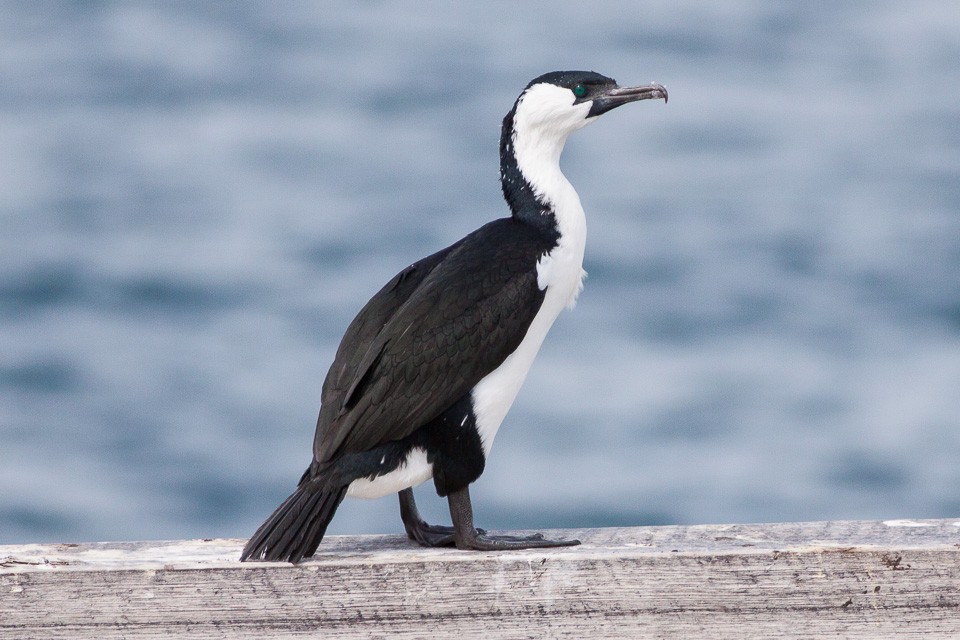Black-faced Cormorant
A species of Typical Cormorants and Shags Scientific name : Phalacrocorax fuscescens Genus : Typical Cormorants and Shags
Black-faced Cormorant, A species of Typical Cormorants and Shags
Botanical name: Phalacrocorax fuscescens
Genus: Typical Cormorants and Shags
Content
Description General Info
Description
Like other cormorant species, the black-faced cormorant is a large aquatic bird, with a long hooked bill, webbed feet, and monochromatic plumage. This is one of the largest cormorants found in south-western Australia and has pied plumage with the upper half of its body black and the undersides white. Its face is naked and black, hence the "black-faced" name, and the tail, feet, and thighs are also black. The back feathers are glossy, and its bill is dark grey with a prominent hook at the tip. It has blue-green eyes. When flying, it holds its head level or lower than its body and holds its wings in a cross-shape like most cormorants. Species that are similar in appearance include the black-faced cormorant (slightly larger) and the Australian pied cormorant (slightly smaller). 
Size
69 cm
Nest Placement
Tree
Feeding Habits
Black-faced Cormorant primarily feeds on benthic and demersal fish, occasionally on cephalopods, diving up to 12m for prey. Feeding varies seasonally, favoring wrasse and silver trevally during breeding. Black-faced Cormorant hunts solo or in flocks, dries its wings post-dive, and regurgitates indigestible parts.
Habitat
Black-faced Cormorant thrives in temperate marine and coastal areas, often seen along inlets, rocky shores, and islands. They demonstrate a predilection for nesting on steep cliffs and rocky islets within colonies. While they can be found in estuarine regions, they show a stronger affinity for marine environments, particularly utilizing coastal structures for breeding and roosting, and rely on open waters nearby for feeding.
Dite type
Piscivorous
General Info
Feeding Habits
Bird food type
Behavior
Because the black-faced cormorant is an exclusively marine bird, its behaviours enable it to be well-adapted to its environment. It uses pursuit-diving to capture fish, and nests high on cliffs to avoid predators. 
Distribution Area
Black-faced cormorants are endemic to the coastal regions of southern Australia and Tasmania. The population is estimated to in the tens of thousands, and is distributed across Western Australia, South Australia, Victoria and Tasmania, particularly in the Bass Straight and Spencer Gulf. There are two independent populations: one on the southern coast of Western Australia, and the other on the coasts of Southern Australia, Victoria and Tasmania. 
Species Status
Not globally threatened.
Scientific Classification
Phylum
Chordates Class
Birds Order
Gannets and Relatives Family
Cormorants Species
Black-faced Cormorant 